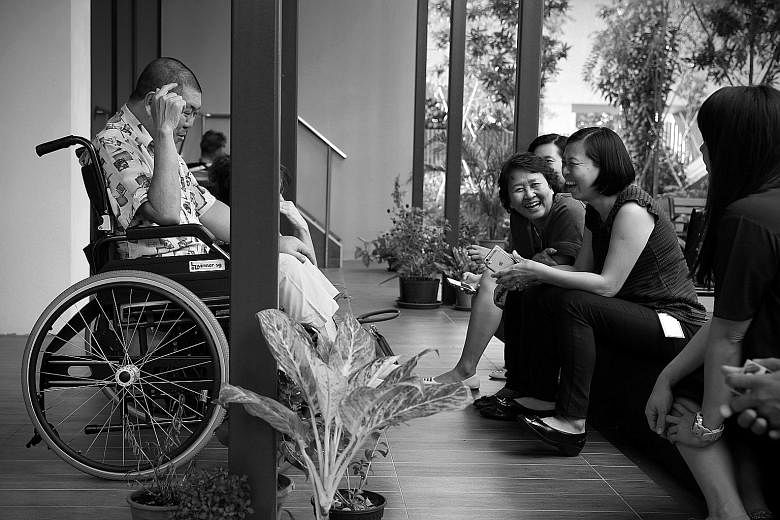Mr Tay Cheng Tian, 54, died in a hospice on Nov 4. None of his family members was by his bedside when he took his last breath, but he did not die alone.
In the last few weeks of his life, a bunch of strangers befriended him and committed to spending time with him till the end.
They fulfilled his last wishes and did things such as wheeling him downstairs for smoke breaks.
When Mr Tay started deteriorating rapidly from oesophageal cancer, the volunteers took turns to sit vigil round-the-clock by his bed.
For about two days, they held his hands, whispered to him or played his favourite songs to let him know that someone was there with him.
One saw him take his last breath at 8.30am that Saturday.
"It was a privilege to be with him, knowing that he was comfortable enough with my presence to go at that moment," said Ms Angela Sho, 43, a volunteer with Assisi Hospice's No One Dies Alone (Noda) programme.
It is part of a small but growing movement to support dying people who have few or no family members or friends to accompany them in their final hours. Demand for the service is likely to grow as the number of elderly folk who live alone in Singapore surges.
The General Household Survey, released last year, shows the number of households comprising only residents aged 65 or older stood at 82,600. About half, or 41,200, are made up of residents who live alone. By 2030, the Government estimates the number of seniors who live alone will hit 83,000.
"Given the increasing trends of one-person and two-person households with the head of households over 65 years old, we foresee the number of persons who die alone may increase," said Ms Chee Wai Yee, chairman of the grief and bereavement work group at the Singapore Hospice Council.
Mr Tay was admitted to Assisi Hospice in September. The former odd-job worker was single and had two siblings. He was estranged from his brother but his sister visited him once a week.
"In home hospice care, as long as there are no reliable caregivers, our patients would not normally pass on alone at home.
"We would normally transfer them to a medical facility where the patient can be cared for," said a spokesman for HCA Hospice Care, the largest provider of home hospice care in Singapore. But doctors and nurses are often unable to be there for patients at the moment of death.
The first Noda programme was started in the United States by a nurse, Ms Sandra Clarke, at the Sacred Heart Medical Centre in Eugene, Oregon, in 2001. A dying patient had asked her during her ward rounds: "Will you stay with me?"
She said she would, after checking on the other patients. When she returned after checking on six other patients, she found him dead.
Overcome with guilt and frustration, Ms Clarke started Noda, with hospital employees volunteering their time. It is now a national movement in the US and in countries such as Japan.
Assisi began its Noda programme for its hospice patients in 2014, with volunteers serving four patients. Its team of 40 volunteers has since kept vigil for 41 patients. Dover Park Hospice started its programme earlier, in 2013, but has a smaller team of 12 volunteers who keep vigil about five times a year.
Volunteers need a certain level of emotional maturity and training. They also need to be highly committed as they are usually activated at short notice.
Ms Samantha Lim, 37, a teacher who did a three-hour vigil with Mr Tay the day before he died, said: "After he passed away, we all went down to the carpark and walked him to the van.
"There was peace. He was not alone and that thought drives me to do this volunteer work because I know there are many seniors out there who live alone."
Why is the Noda programme important?
Associate Professor James Low, council member at the Singapore Hospice Council and a senior consultant at Khoo Teck Puat Hospital, said: "To die alone... there is a sense that their death didn't matter to anyone."
Patients near death can feel lonely even if they are in a hospital or hospice, he noted, adding: "This can happen in the busyness of the ward where so many others are 'crying out' for attention and help."
In Mr Tay's case, he preferred to die in the hospice rather than at home. He told The Sunday Times: "Here, I have the company of nurses and volunteers, who have so much love and compassion. That is something money can't buy."


